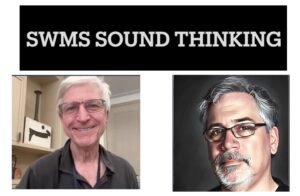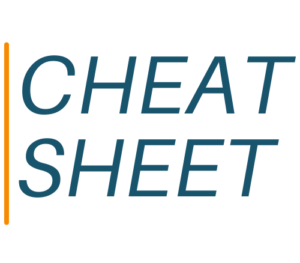
SWMS ‘Sound Thinking’: Rafe Needleman’s AI Advice For AEs and SAEs
You need to be logged in to view this content. Please Log In. Not a Member? Join Us

You need to be logged in to view this content. Please Log In. Not a Member? Join Us
In 1991, back when I was running PC Week, I once flew to New York to meet to with the big boss, Ziff-Davis CEO Eric Hippeau.

Below are 23 reporters known to cover funding news. The idea behind this cheat sheet is to capture the core group. To do this, we sometimes had to include more than one reporter per publication.

Here’s a baker’s dozen’s worth of podcasts focused on customer success. Included are podcasts from Forrester and vendor Intercom — those may not be overly pitchable. The rest probably are.

Watch and listen as SWMS contributing editor David Strom discusses with Sam Whitmore his analytics experiences at CSO Online and elsewhere. Hear why analytics are both useless and valuable, and be ready to jump on the one thing all passionate PR pros should do upon completing this breezy, under-ten-minute video podcast.

Here’s a cheat sheet with ten authors of cybersecurity newsletters on Substack. All are men, and few are Americans.

Here’s an updated cheat sheet with 11 Substack newsletters focused on AI. The selection comprises a combo of analysis-driven work from experts, and newsletters that blend original work with ICYMI links to “AI news of the week.”

Substack is producing a fair amount of talented fintech experts; here’s a cheat sheet with eight of them, with contact info and more.

Below are the names of 16 reporters — mostly from the trades — who regularly cover issues of data privacy. Their articles run the gamut from politics, to law, to breaches, to VC funding of startups in the data privacy space.

This revision of a June 2023 cheat sheet doubles the number of cybersecurity targets based in the Washington, DC area — from 13 to 26. You’ll find multiple reporters from a single publication only if they write frequently.
YOUR ACCOUNT
FRIDGE NOTES
The day is coming that you will not be able to avoid framing the targets in terms of red or blue. So far you’ve been able to do that. Those days are coming to a close: large swaths of “the audience” are headed in this direction. If you don’t believe it, read this from Bloomberg. You will never see better reporting than this.
Superb reporting from Business Insider on what comes after Google Search. All the experts quizzed. The gist: these technologies and techniques are borderline mythical at this point.
In the latest installment of Sound Thinking...David Strom, a well-known IT reporter and security expert, discusses the threat of AI tricking security systems and luring them to catastrophe. What will that mean to editors? When will it happen? It’s not an if, it’s a when.
Good vision here from Jay Lauf. Interestingly, Jay suggests that B2B publishing will become a service business to B2B pros, providing value directly to individuals and organizations. Static content is dying very quickly. This is the point of the analysis from this great media organization.
America can’t read anymore. The good news: advertisers can advertise against different kinds of emotion in the copy. So even if the numbers of readers drop, there are more ways to attract ads. So perhaps the bad news will get cancelled out by the good. Sam Whitmore and David Strom discuss.
Can you imagine not needing to be a human being to be a superstar? You may remember Max Headroom. There’s plenty of examples of technology personas, but AI is a different world altogether. Is there a tech media angle to this item? Not really, but here she is — Xania.